SQL is moving to a new pricing model
This will enable custom configuration of performance and storage
Design an experience for new and existing customers
Scale pricing pattern across multiple products within Azure SQL and [C+E]
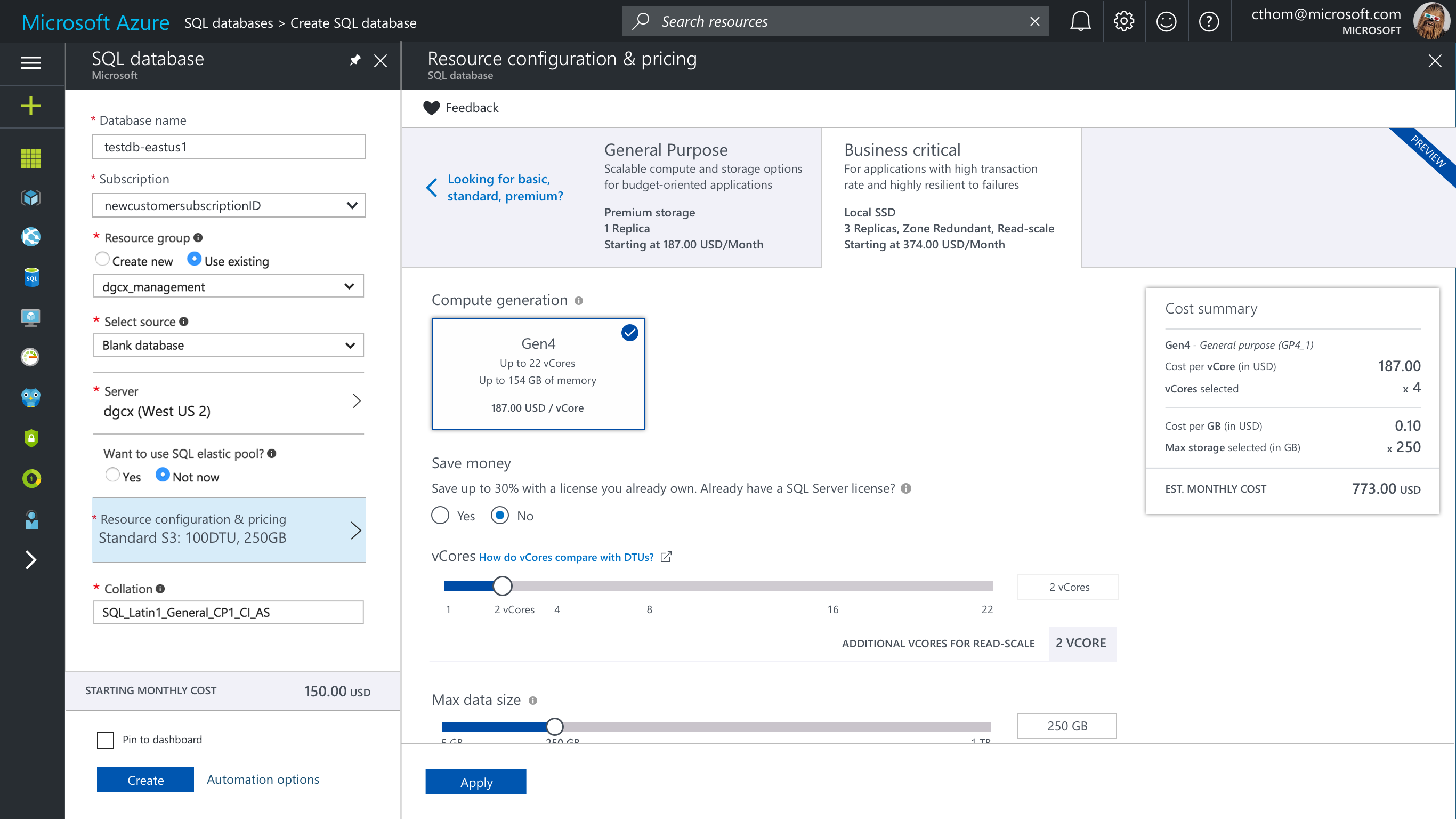
SQL is moving to a new pricing model
This will enable custom configuration of performance and storage
Design an experience for new and existing customers
Scale pricing pattern across multiple products within Azure SQL and [C+E]
I was the UX Design Lead for this project. During this project my responsibilities were:
Leveraging some prior usability studies and outreach programs we found a major barrier existed between customers understanding SQL’s pricing structure and how it could be applied their current data needs. This issue grew with the reality that each SQL database product had their own pricing metric.
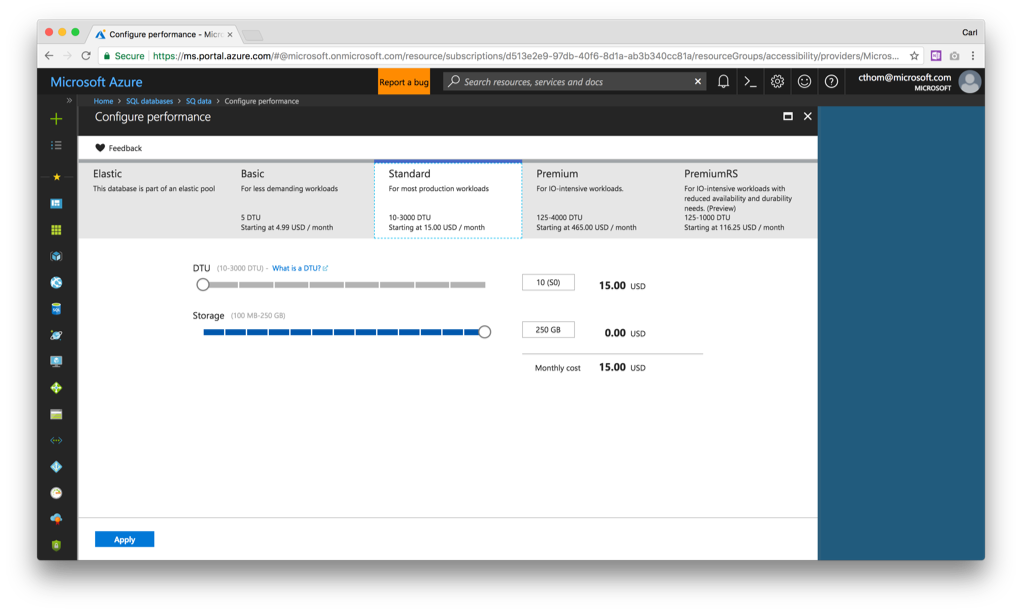
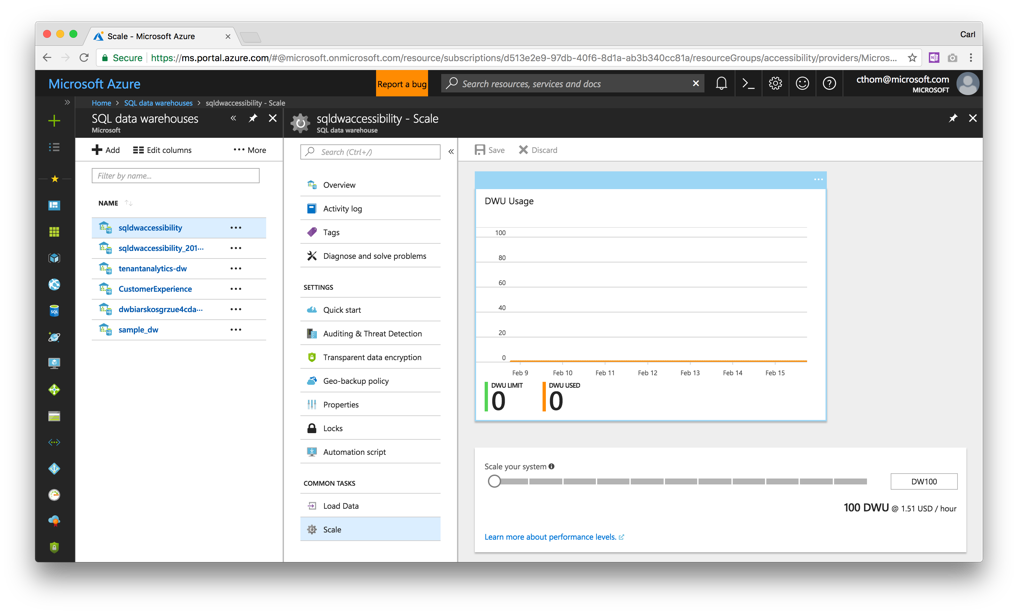
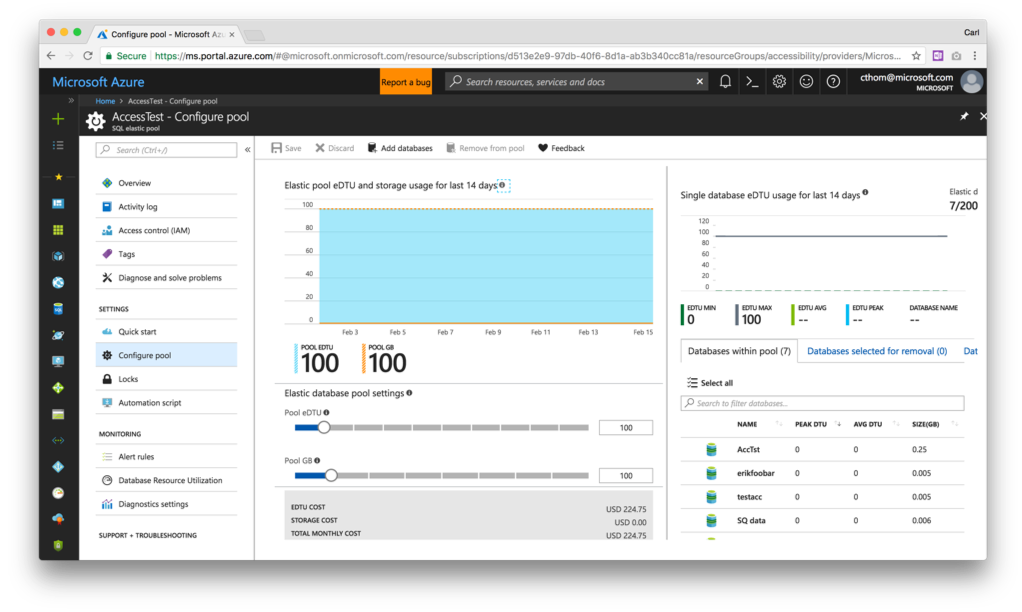
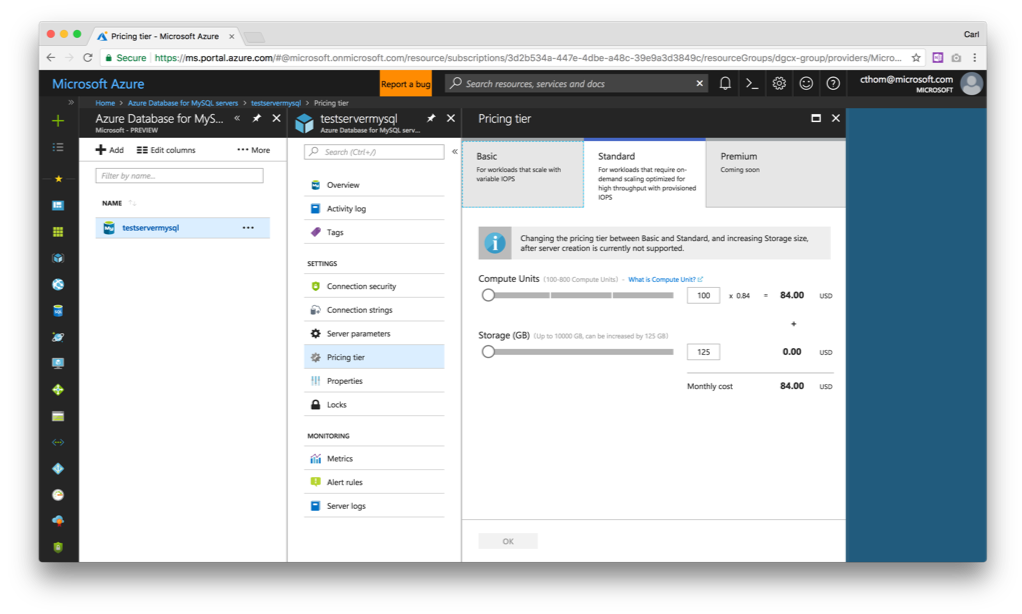
What made these metrics difficult was that it was not easy to correlate a value to the real world.
For example: The DTU/eDTU model did not showcase how much CPU, Memory, IO was allocated per a DTU. There were online resources to help calculate a potential DTU range but there wasnt a pure formula on how those metrics built a DTU. Along with this it took up to 30 days to determine if the amount of DTUs selected was correct. This could cause bigger issues for a user in the first month. All around throttling or over-spending.
You can see some of confusion within reddit posts, like this one.
Customer pain points:
User Experience Goals:
It is important to note that with any project you need to also assess what is important to the business. This was no different. I worked closely with my PM and Leadership to determine what their goals were and how they would align with our UX goals.
Business Goals:
An important goal mentioned here is around transparency. We want to be transparent but not so transparent that we are no longer competitive in the market. This is a stark reality when working in data, to build more performant systems you may have technical specs that sound less impressive then your competition. This could lead to a lack of faith/trust from your users and lower the bottom line. So this work needs to instill confidence in our dev community and help grow the cloud platform effectively and ethically.
The next stage was to start mapping out the flows and how this new vCore model will integrate with our old world of DTU/eDTUs. This goal was focused on creating an experience that was intuitive and consistent with our other products. This required me to lead efforts with the PM and engineering team to fine tune our message and UX goals.
Early wires focused around these concepts: old tiers and new customizable tiers. The new Tiers would provide our customers more freedom and be founded in industry standard terminology. This would make the process of allocating more resource and migrating to Azure less prone to friction.
Migration became a huge piece of this puzzle since all on-prem systems used a concept of CPU and cores. Before this project Azure SQL had not talked about their performance in that connotation.
These explorations would lead us to creating a dual world where we maintained our old pricing and new pricing models. Foundationally, this was temporary and the pricing models would help encourage customers to migrate to the new vCore model. But from a business standpoint we did not want to make it feel forced and knew that changes in DB resourcing is not something taken lightly by large companies.
Below shows the high fidelity user flow:
What you will notice here is the overall breakdown of an azure blade and how other partners can consume it. If a team doesn’t have “pricing tiers” then the tabs on top disappear and they just have the commands, control area, and the cart. This is also how I promoted this content across other partners and ensured our SQL products were building a stronger alignment in our overall pricing story.

Each shopping cart variation enables scenarios for our teams. These are some of the options but not all that is possible within the cart. The idea behind this was that it needs to be open enough to encompass different needs while always maintaining its foundation.
Create
Additional charges & animation
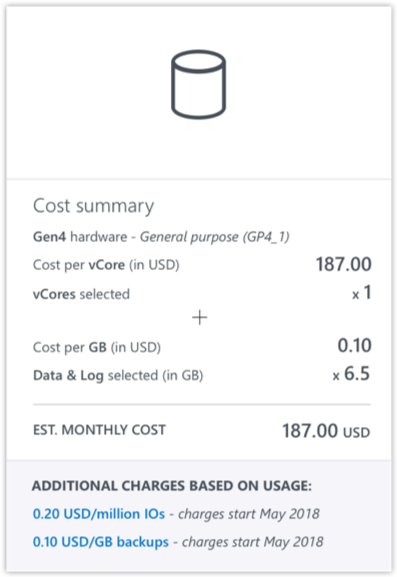
Create
No additional charges
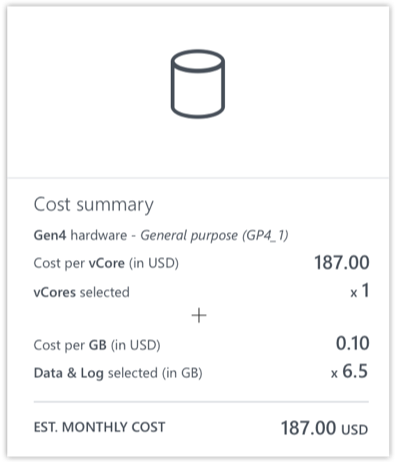
Management
Charting control integrated
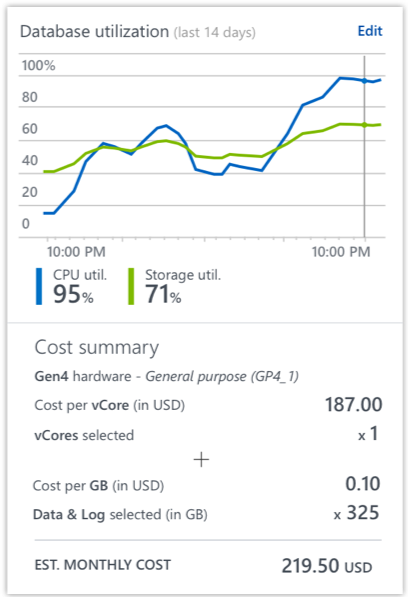
Create and/or Manage
No top level animation/chart
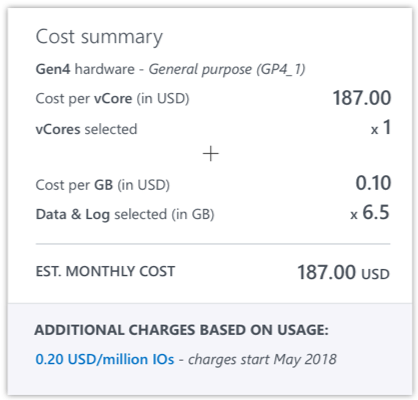
Once a solid foundation was built for SQL database’s pricing model I move the pattern across multiple other teams within Azure. This was the integration of the new design as well as the use of vCores.

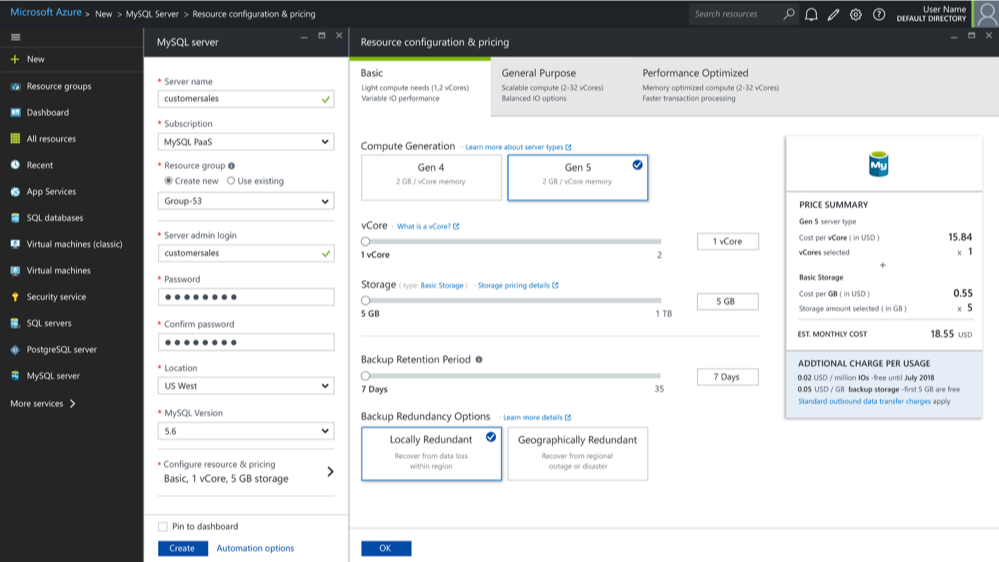


SQL databases new pricing experience launched in the spring of 2017. From the get go we saw an increase in customers manipulating their database levels as well as positive feedback around our development community. The vCore model was able to provide a more streamlined pricing structure for users coming from on-prem as well as demystifying the way our data stacks work.
This design was also patterned and integrated into several other products within Azure, as a new way for them to handle “tiers” and customizations. As well as leading the way to Hyper-scale, an accelerated performance tier targeting large scale businesses.
I am currently leading a new initiative to further update the experience, unfortunately that will have to wait to be shown until it has GA’d.